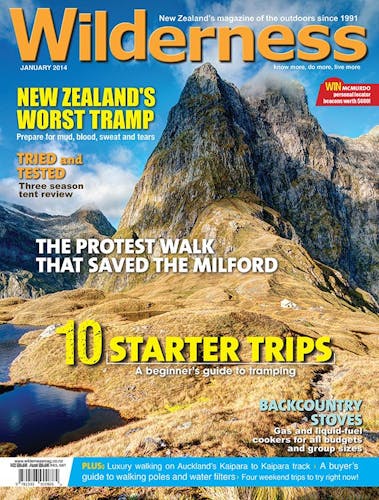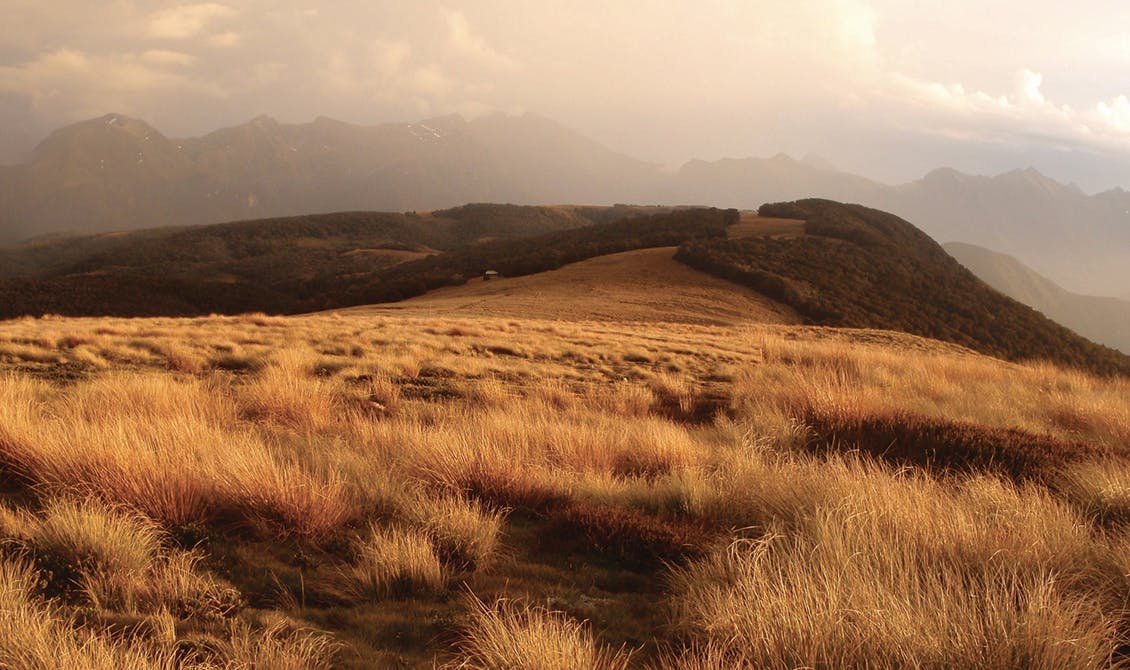Are mobile phones any more of an intrusion on a backcountry experience than a mountain radio, GPS or personal locator beacon?
I had been driving taxis in Sydney for too long. Eighteen months on the road had made me stir crazy. Each morning after an all night shift (and obligatory poker game where we company drivers would win or lose our day’s takings) I’d return to my scuzzy flat and stare at the maps of the South Island that covered the walls of the lounge. On them I’d trace a myriad of routes and contours through the places I knew: the Matthias, Hopkins and Taipo – and also those completely unknown to me like Fiordland, Landsborough and Kahurangi.
One day I realised I had to get back into the hills and in the space of a week handed back my cab keys, did a runner on my flat, and flew back home. A month or so later I was down on Fiordland’s south coast, ready to head north with the loose idea to keep walking until I got to Farewell Spit.
It quickly became apparent that southern Fiordland was anything but the straightforward country I’d imagined from afar. With only topo maps and cryptic descriptions from Moir’s to guide me, I thrashed my way through the forest. On the third day I lost my maps and spent two hours grovelling through crown ferns retracing my steps before I fluked upon them.
Lake Kakapo was a low point. After days of rain, I went to bed mildly hypothermic after not being able to get my cooker started and having to again wring out my soaked sleeping bag before hopping into it.
It was an intense time being alone in a strange forest without company or any means of raising an alarm. It didn’t take long to realise that even a sprained ankle could have very serious consequences.
After 10 days of trackless travel I finally made it to the Hauroko end of the Dusky Track. I sprinted the track in two days, hopped on the ferry to Manapouri and got the hell out of Fiordland with no desire to return.
Yet less than a year later I was back on the south coast, with one key new piece of kit – a mountain radio. This technology made a psychological difference. The radio gave confidence that no matter what happened, help could be summoned.
I mention this because recently I was drawn into a debate about the merits of people using mobile phones on tracks and how much of an intrusion these devices are on the ‘pureness’ of the outdoors experience.
I can understand the logic behind the argument – how somehow my experience of peace and solitude gets interrupted by someone yakking on a bunk about the rugby, or ordering pizzas to be ready for when you come out.
Yet behind these comments is also a sense that treating our wild nature with respect can only be done a certain way, and using a mobile phone in the outdoors automatically downgrades its magic for us all.
A few years back there was considerable research done into outdoor users’ perceptions and attitudes to wilderness, and in particular what types of activities people considered unacceptable.
It was the attitudes of the 25 per cent or so categorised as ‘strong purists’ that were most revealing. What came through was an intolerance for people doing different activities to their own – or doing the same activity in a different way. For instance, coming across people hunting or being guided was seen to impact negatively on their own experience. Perhaps using mobile phones needs to be added to the list.
It’s this sense of elitism that’s worth being wary of. As we all know, people have different thresholds for adventure and perceived risk. For some, walking the Routeburn is a straightforward stroll, for others a highly challenging adventure.
Personally, I don’t carry a mobile phone or mountain radio into the hills anymore. I’m happier to have a PLB in my pack should an emergency require it.
But using mobile phones on tracks with reception shouldn’t be too big an issue, especially if it’s the difference between feeling confident or comfortable enough to head out on some first adventure. And if that rankles too much then there’s still many, many places where lack of reception makes the argument redundant.
And anyway, rather than carrying ratty photocopies of maps and pages from Moir’s, it won’t be long before we’ll be accessing our guidebooks in the ‘cloud’. They’ll be much more dynamic, with walkers from the day before tagging a spot as a place where some whio/blue duck are currently hanging out, which one of those boulders is a great bivvy rock, or where a fallen log is providing a temporary bridge across some West Coast gorge.
This Christmas, Project Janszoon has taken the lead on this and installed a wifi network on Abel Tasman Coast Track. But rather than being able to access every website, it links only to those pages that keep you informed about all that’s relevant to your park experience.
What’s more, smartphones have the ability to open up the outdoors to citizen science – where a traverse across a range can also become an ecological data collection mission that helps monitor the health of, or damage to, our more remote places.
Regardless, for those wanting a ‘purer’ wilderness experience, much of the backcountry remains a place where we can leave behind as much technology as we’re game to, including – if you’re up to it – your GPS, altimeter watch, gas cooker, space-age fabrics, self-inflating sleeping mattresses, high resolution maps, free-standing tents, super-lofting sleeping bags, titanium cookware and dimmable headlamps – as well as our mobile phones.








